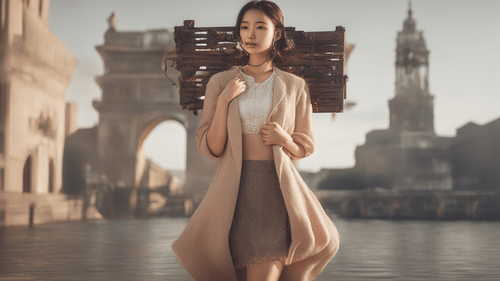
Introduction
In an age where technology continues to break boundaries and redefine human capabilities, the emergence of Picture to Text AI has undoubtedly become a pivotal advancement. This revolutionary technology bridges the gap between images and text, unraveling a world of possibilities in various domains. In this comprehensive article, we delve deep into the intricacies of Picture to Text AI, its applications, benefits, and how it's reshaping the way we communicate and interact with the digital landscape.
Picture to Text AI: A Closer Look
Decoding the Concept
Picture to Text AI, often referred to as Optical Character Recognition (OCR) technology, is an innovative process that enables machines to decipher and extract text content from images. This AI-driven capability harnesses sophisticated algorithms to analyze visual data and transform it into editable and searchable text format.
The Inner Workings of Picture to Text AI
At its core, Picture to Text AI employs convolutional neural networks (CNNs) to identify patterns, characters, and words within images. This neural network architecture simulates the human brain's visual processing, allowing the AI system to comprehend diverse fonts, languages, and writing styles.
Advancements in Text Recognition
From Handwritten Notes to Digital Text: Evolution of OCR
The journey of OCR technology dates back to the mid-20th century, where initial attempts were made to automate text recognition. However, the true breakthroughs emerged in recent years, with advancements in deep learning and neural networks. These developments have propelled Picture to Text AI to new heights of accuracy and efficiency.
Multilingual Text Extraction: Breaking Language Barriers
One of the most remarkable features of Picture to Text AI is its ability to extract text from images in multiple languages. Whether it's a street sign in Tokyo or a restaurant menu in Paris, this technology transcends linguistic boundaries, contributing to seamless global communication.
Applications Across Industries
E-Commerce: Transforming Shopping Experiences
Picture to Text AI has revolutionized the e-commerce landscape by enabling users to effortlessly convert product images into searchable text descriptions. This enhances the online shopping experience, empowering consumers to find products more efficiently and make informed purchasing decisions.
Education: Digitizing Learning Materials
Educators and students alike benefit from the educational applications of Picture to Text AI. Physical textbooks and handwritten notes can now be digitized with ease, making information more accessible, searchable, and conducive to interactive learning experiences.
Healthcare: Enhancing Medical Data Management
In the realm of healthcare, Picture to Text AI plays a pivotal role in converting medical charts, prescriptions, and diagnostic reports into digital text formats. This transformation expedites data retrieval, fosters seamless information exchange among healthcare professionals, and ultimately contributes to enhanced patient care.
Unlocking Business Efficiency
Streamlining Document Digitization: A Productivity Booster
The integration of Picture to Text AI into corporate workflows has led to a significant increase in efficiency. Tedious manual data entry tasks are minimized as invoices, contracts, and business documents can be swiftly converted into editable text, reducing errors and optimizing resource allocation.
Data Mining and Analysis: Extracting Insights
Picture to Text AI isn't just about transcribing images; it's about unlocking valuable insights hidden within visual data. Businesses can now analyze large volumes of text extracted from images, facilitating data-driven decision-making and strategic planning.
Frequently Asked Questions
How Accurate is Picture to Text AI?
Picture to Text AI's accuracy largely depends on the quality of the input image. High-resolution images with clear text yield the best results, boasting accuracy rates exceeding 95%.
Can Picture to Text AI Recognize Handwritten Text?
Yes, modern Picture to Text AI models can recognize and convert handwritten text into editable digital text. However, accuracy may vary based on handwriting legibility.
Is Picture to Text AI Limited to Printed Text?
No, Picture to Text AI can recognize text from a variety of sources, including printed documents, digital screens, signage, and labels.
Does Picture to Text AI Protect Data Privacy?
Most Picture to Text AI processes occur locally or on secure servers, ensuring data privacy. It's essential to choose reputable providers that prioritize data security.
What's the Future of Picture to Text AI?
The future holds exciting prospects for Picture to Text AI, including enhanced multilingual support, real-time translation, and integration with augmented reality for immersive text-based experiences.
How Can Businesses Implement Picture to Text AI?
Businesses can integrate Picture to Text AI through software development kits (SDKs) or third-party applications. Custom solutions can also be developed to cater to specific organizational needs.
Conclusion
In the ever-evolving landscape of technological innovation, Picture to Text AI stands as a testament to human ingenuity and creativity. This transformative technology has not only simplified how we interact with text and images but has also opened doors to new realms of efficiency, accessibility, and collaboration. As we journey into the future, the symbiotic relationship between humans and AI continues to flourish, promising a world where the convergence of visual and textual communication knows no bounds.